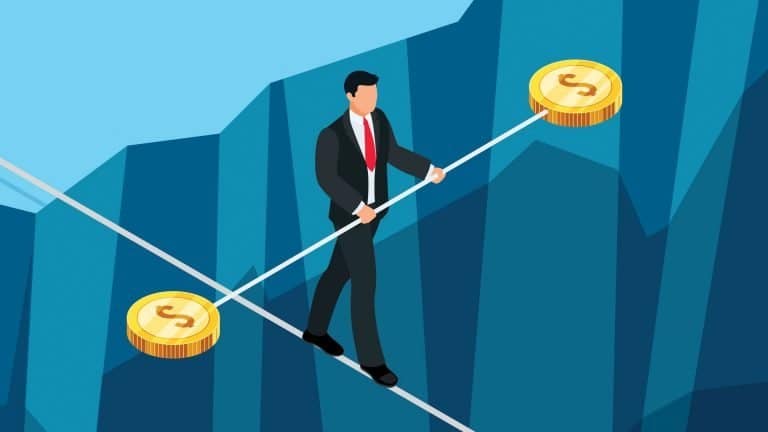The future of cryptocurrency – is it in stablecoins?

Gerald Fenech examines how companies like Reserve are applying stablecoins to real-world problems
Cryptocurrency prices are settling at quite a substantial differential from their all-time highs registered last year. It seems that there is a significant movement towards the stablecoin field where investors are supposedly parking their assets in what is supposed to be a safe haven. But is that really the case? It’s really high-time that the industry starts talking about two dirty “best practices” in the stablecoin market – falsely inflating market caps, and the gaming of daily volume data via wash trading. The reality is that the market caps and daily volumes presented on CoinMarketCap and StableCoinIndex are constantly being gamed by stablecoin projects who employ the following tactics: Giving discounts to investors who agree to park their money in the stablecoin for a period of time to artificially inflate the market cap (which causes problems for the stablecoin once the lockup window ends). Providing over-the-counter (OTC) trading desks up to a 1% discount if traders agree to use these tokens in some fashion before redeeming them for USD, which has resulted in a wash-trading epidemic that creates false daily volume data.
 Digital marketing increases performance
Digital marketing increases performance
Most projects do this because, currently, market cap and volume are the standard to measure a stablecoin’s success by – and because current regulations do not prevent this activity. There does seem to be one stablecoin however that is ahead of the game in this respect and that is Reserve (a stablecoin backed by Coinbase, Peter Thiel, Sam Altman, and more). Rather than play this game and inflate their way to perceived success, Reserve aims to instead focus on applying their stablecoin to solve very specific, real-world problems – beginning in Venezuela and Angola (and then expanding to other high inflation markets). These are opportunities that – if executed well – can lead to far greater (and real) market cap and volume than current stablecoins’ inflated numbers. Speaking exclusively to AIBC Summit, Nevin Freeman, CEO and Co-Founder of Reserve explained that the industry is currently so desperate to prove real-world value after a painful series of speculative bubbles, it makes sense that the focus would land on less speculative assets like stablecoins.
Digital marketing influences success, however comes with a cost
But the usage statistics that are often cited to measure progress in real adoption are hackable, so it’s hard to tell what’s real and what’s just fake. “We shouldn’t be surprised that manipulation of these stats is happening behind the scenes in an industry like crypto. After all, the whole story of crypto speculation was originally born out of a manipulated pump and dump on bitcoin back in 2013 on MTGOX, the first bitcoin exchange”, Freeman added. But even the verified portion of volume and market cap of stablecoins today is not very meaningful; the only use-case so far is supporting the speculative trading of cryptoassets that have shown little real-world value to date. The real challenge for Reserve and other stablecoin projects is bringing stable crypto into the real world, where it can be used to transact goods and services globally and store the wealth of businesses and citizens that don’t have access to stable money without it. “We’re actively working on this now, and we look forward to the point in crypto’s history where real-world usage statistics are the main focus of progress. Those are the metrics by which we’ll be judging our own success.”,
Freeman explained. Miguel Morel, Co-Founder of Reserve explained that the crypto industry hasn’t yet figured out an accurate measuring system for tracking progress and adoption. Figuring out the truth about real world use of cryptocurrency requires the ability to differentiate between relevant signals and the rest of the noise in the market. “Back when it was just Bitcoin, it made sense to look at the the numbers on CoinMarketCap to measure Bitcoin’s growth and progress in the world. Now that we have more centralised and complex cryptocurrencies with hungry shareholders, the incentives reward gamification of higher market cap on exchanges instead.
A more reliable signal of real world adoption is whether people in other countries are talking about a particular token or company”, Morel said. Currently, people in digital marketing and countries in hyperinflation only really know about Bitcoin. They haven’t heard of stablecoins. This shows a serious lack of effort from stablecoin companies in bringing awareness of their product to these markets, which speaks to their focus on crypto traders. “It’s time for all of us in the industry to step up and do the work of getting real world customers who would find great use in our product. That’s the beauty of Reserve – we’re not protecting people’s day trading gains, we’re protecting people’s life savings.”, Morel concluded. Reserve aim to launch in Q2, and will be offering everyone in Venezuela and Angola the ability to:
- Protect their money from inflation/hyper-inflation (a safe place to save their money). There is currently $466B globally locked up in currencies inflating more than 20% annually.
- Affordably receive money from their family members outside the country (saving their family members 10-15% in remittance fees and putting that money in their pockets). Remittances were a $613B industry globally in 2018, with $4.5B of that going to Venezuela alone.
- Easily accept payments in stablecoins, enabling merchants to pay their international vendors, while protecting their money from inflation-prone local currency. The mobile payments market was $930B in 2018.
Reserve believes that by being the stablecoin project committed to solving real-world problems, it can also become the (legitimately) largest and most used stablecoin globally.









